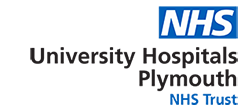|
|
Foods allowed
|
Foods to avoid
|
|
Breads and cereals
|
- Any white bread, cakes, scones, pitta, chapattis, naan, ect.
- Breakfast cereals made from rice or corn e.g. cornflakes, rice krispies, Frosties
- Rich tea biscuits, shortcake, custard creams, wafers, cream crackers, water biscuits.
- Potatoes without skins, instant mash, potato waffles, chips without skin
- White rice, pasta macaroni, noodles.
- Tinned spaghetti
|
- Any wholemeal/brown/granary/fibre-enriched bread, cakes, malt loaf, scones, pitta, chapattis, tortilla wraps, ect.
- Whole-wheat/oat-based cereals e.g. all bran, Weetabix, muesli, porridge.
- Breakfast cereals containing fruit or nuts.
- Digestives, oatcakes, or biscuits containing oats, flap jacks, wholemeal or wholegrain crackers, crackers with seeds, Ryvita.
- Potato skins
- Brown rice, pasta, macaroni, noodles.
|
|
Vegetables, fruit, pulses, beans and legumes
|
- Sieved tomato sauces (no skin or seeds), tomato puree
- Well cooked vegetables with no skin, seeds or stalks e.g. boiled swede, turnip or carrot, skinned mashed or creamed potatoes, softly cooked florets of cauliflower or broccoli.
- Fruit juice without pith or bits.
- Smoothies which are pureed.
|
- Raw vegetables or salads
- Sweetcorn and peas
- Celery
- Potato skins
- Dried fruit
- Citrus fruit and berries
- Fruit juice with pith or bits
- Smoothies with bits or lumps.
- Fruit/nut scones, fruit cakes, coconut cake, carrot cake, other cakes containing fruit or nuts.
- No pulses, beans or legumes like lentils, black beans, kidney beans, chickpeas, and hummus.
|
|
Fats, meat, fish, dairy and alternatives
|
- Chicken, turkey, sausages, bacon
- Meat pies (avoid tough or fatty meat).
- All fresh, tinned, smoked fish and fish in white breadcrumbs/batter.
- Eggs
- Soya, Quorn, and tofu
- Almond milk, coconut milk, hemp milk, dairy-free plain soy yoghurt.
- All milk, butter, cheese, smooth yoghurts and ice-creams.
- Fat is ok in moderation.
|
- All red meats
- Meat casseroles, pies, pasties containing vegetables, sausages with onions.
- Fish in wholemeal breadcrumbs.
- Yoghurts or ice-cream with pieces of fruit.
|
|
Desserts and sugary foods
|
- Jelly type jams, marmalade without peel or lemon curd.
- Chocolate
- Boiled sweets.
- Custard
- Jelly
- Smooth sorbet
- Mousse
- Pancakes made with white flour
|
- Jam or marmalade containing fruit bits, seeds or peel.
- Peanut butter
- Cake, scones, or chocolate containing fruits or vegetables.
- Sorbets with bits of fruit.
- Red jelly
|
|
Drinks
|
- Tea
- coffee
- squash
- sports drinks
- fizzy drinks
- milkshakes
- water
|
- milkshake syrups with real fruit and seeds.
- Fizzy drinks or squash with red or purple colouring.
|
|
Soups
|
- Clear or creamed soups e.g. tomato or chicken.
|
- Packet soups
- Soups containing chunky vegetables, lentils, or beans.
|
|
Condiments
|
- Tomato sauce, brown sauce, Worcester sauce, smooth mustard, vinegar, salad cream and mayonnaise.
- Salt and pepper.
- Marmite.
- Gravy, white sauce, cheese sauce
|
- Sauces which contain bits of fruit, vegetables, or seeds.
- Pickles.
- Herbs and spices.
- All seeds.
|
|
Medicines
|
- Medicines you normally take
|
- Medicines you have been told to stop by your GP and the endoscopy department.
- Multi vitamins
- Protein powders
- Iron tablets
|


